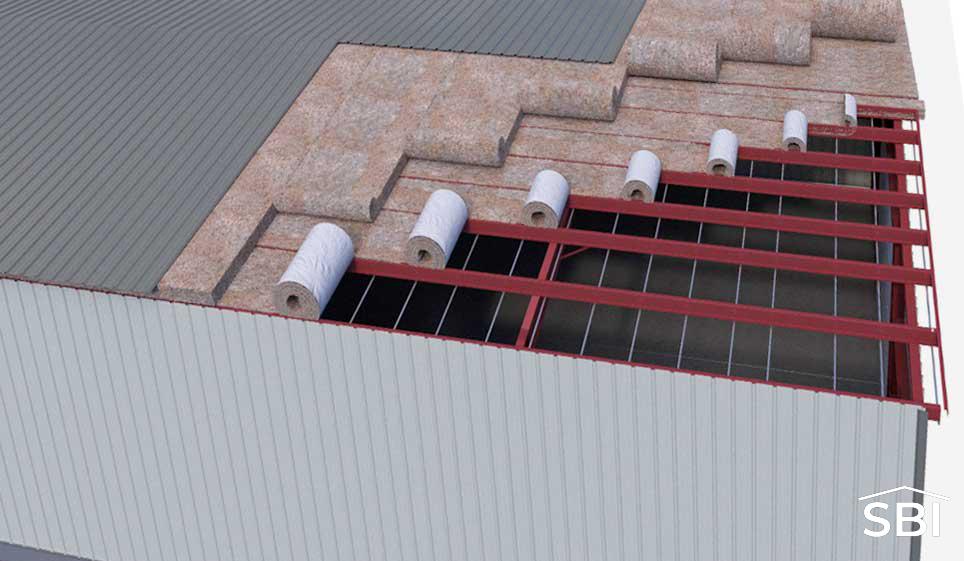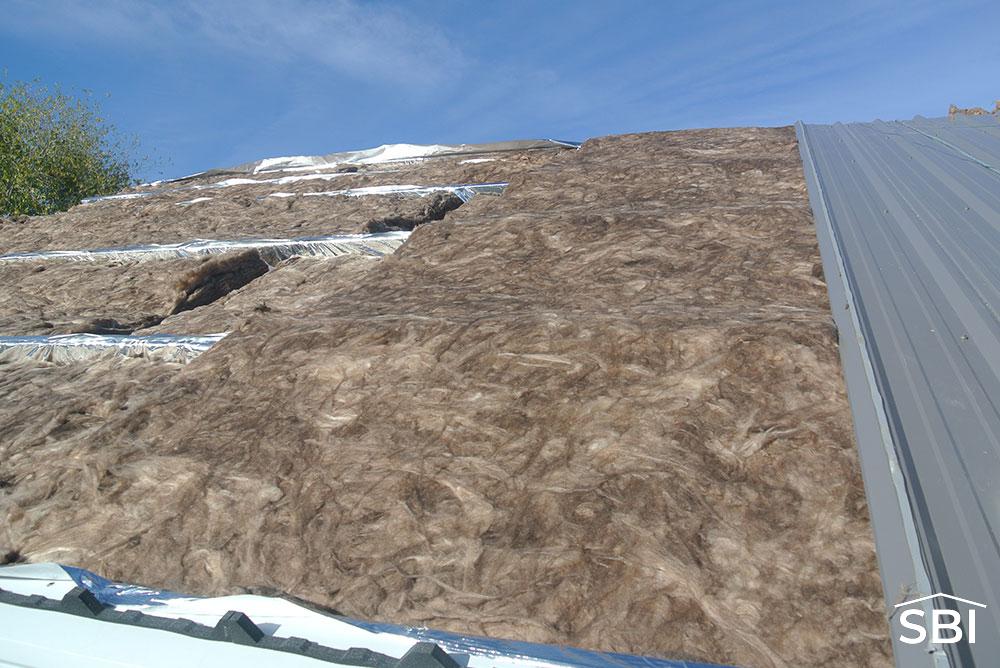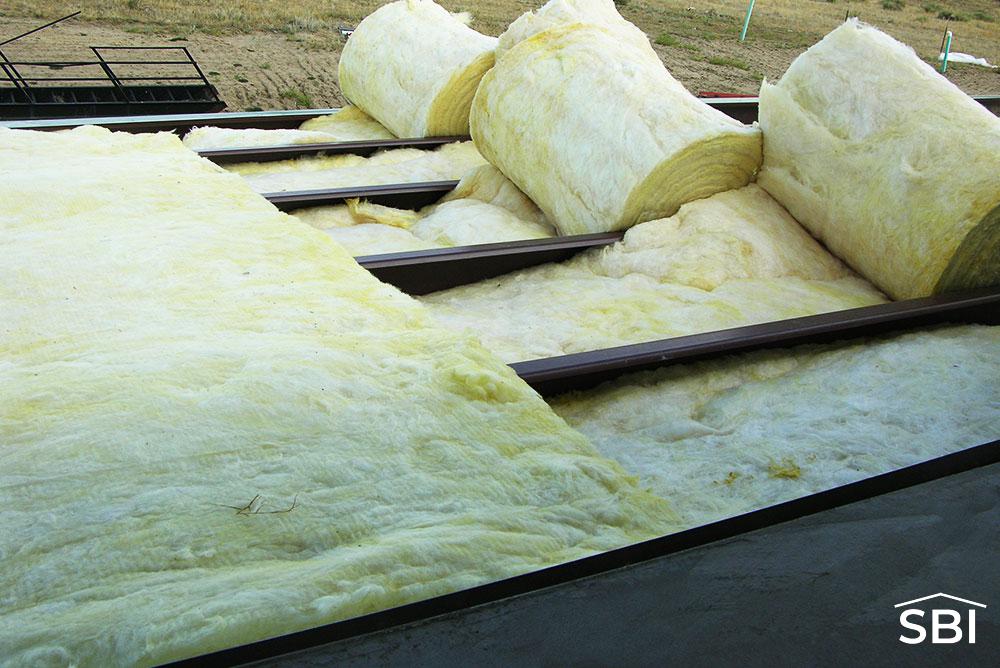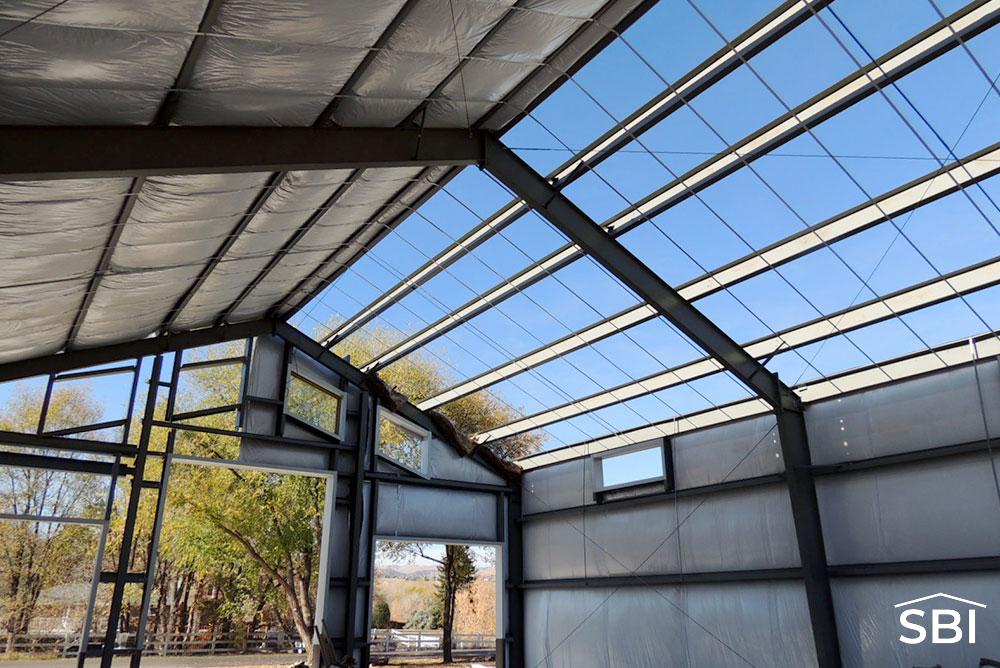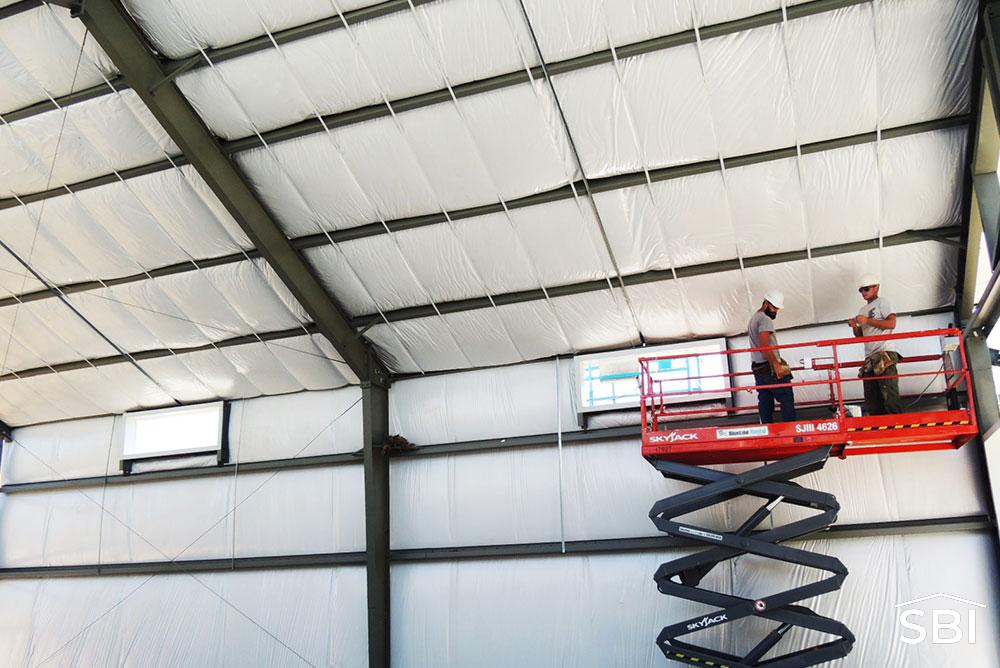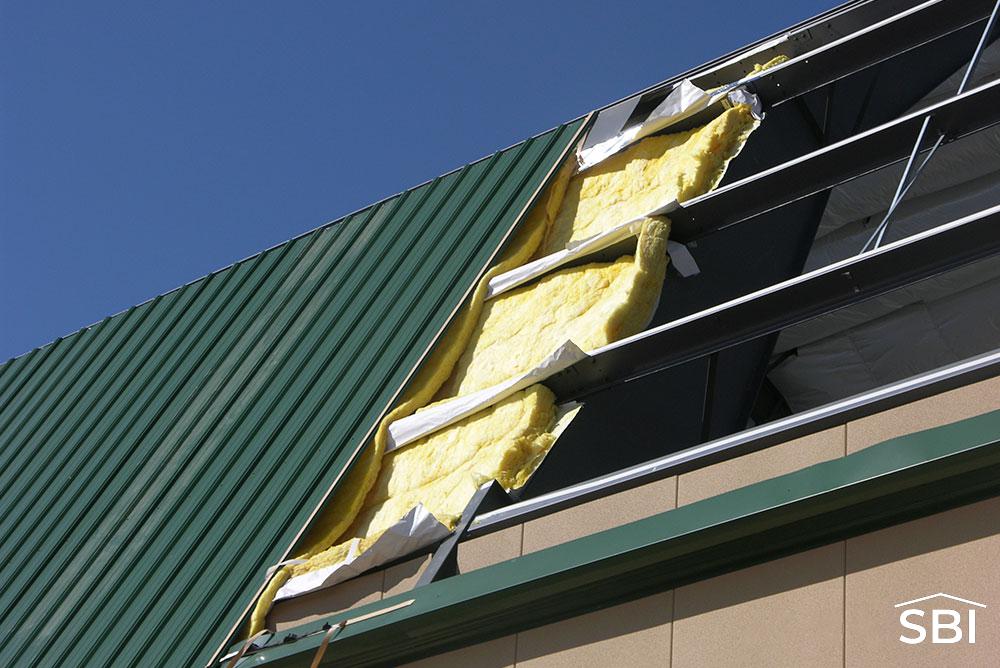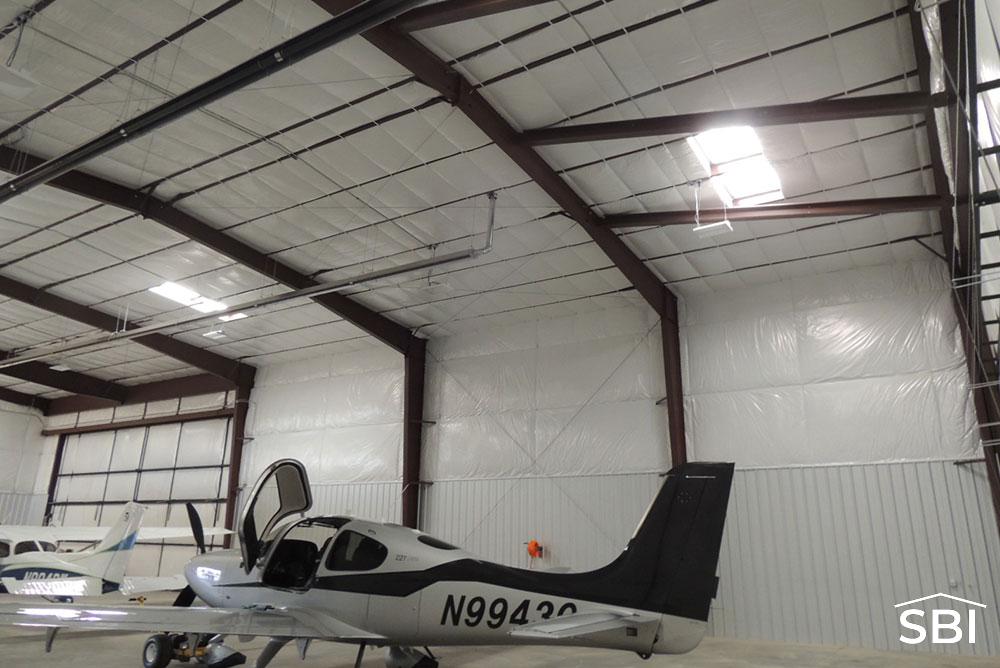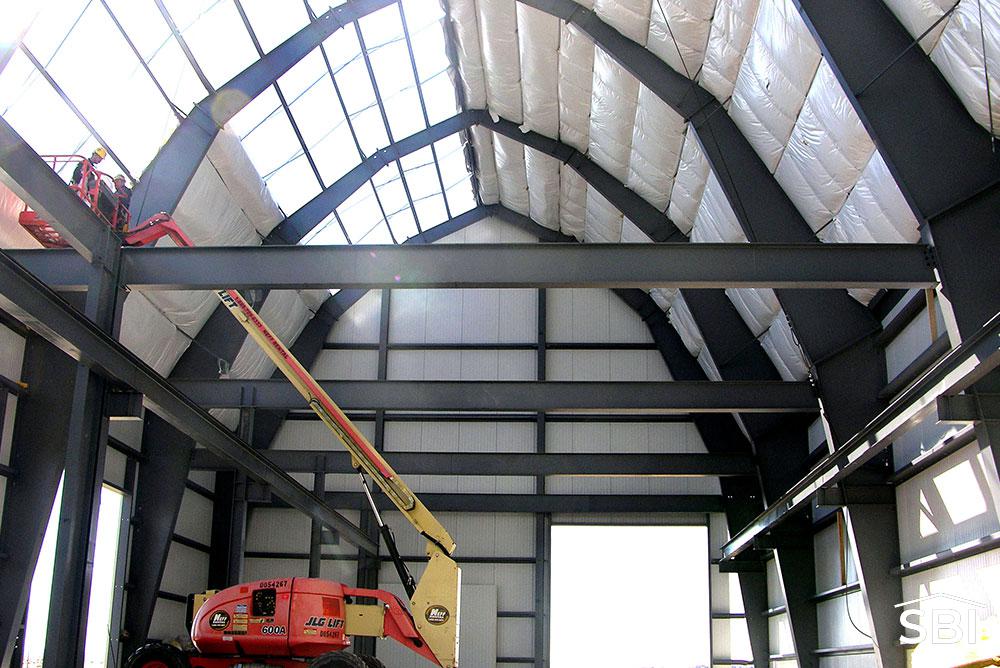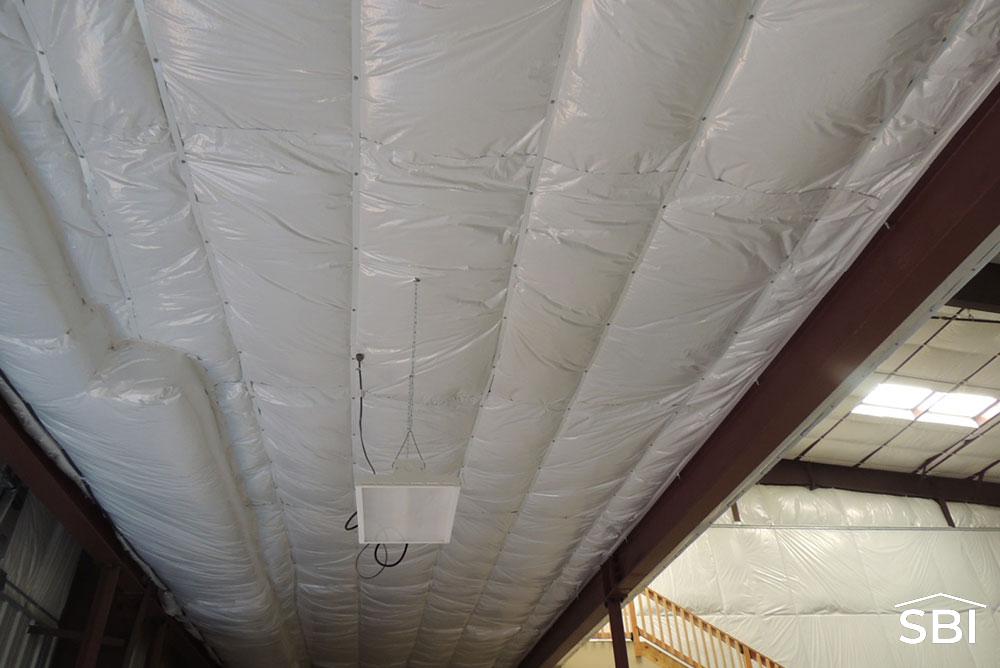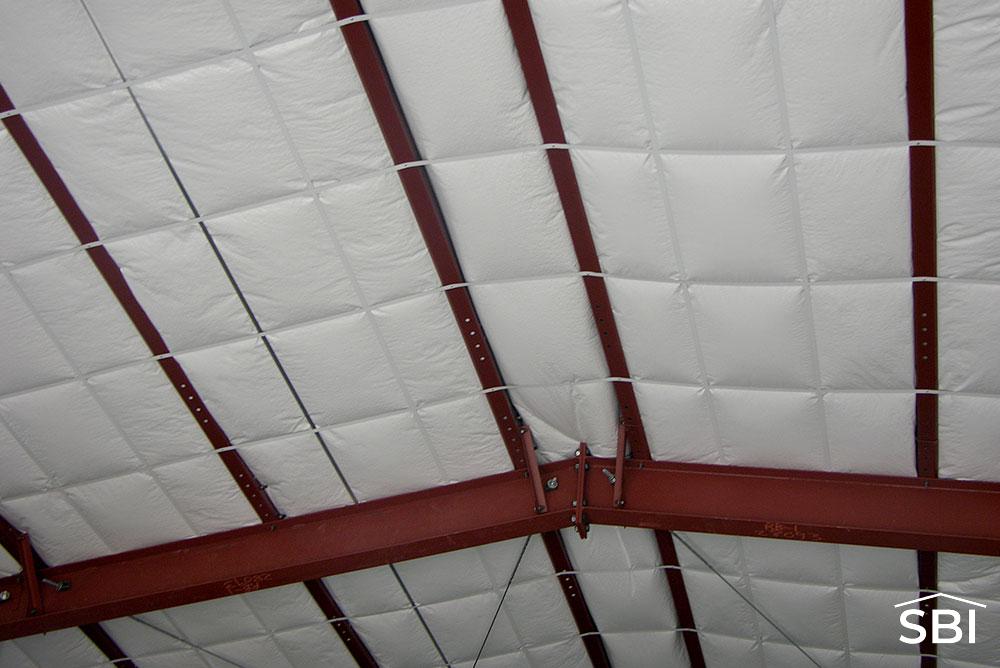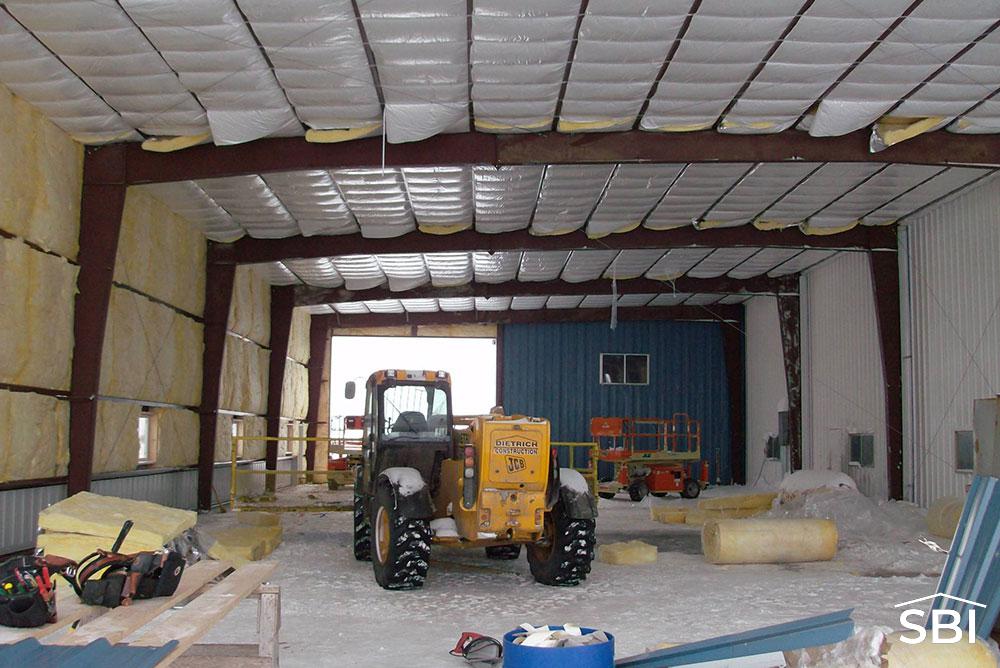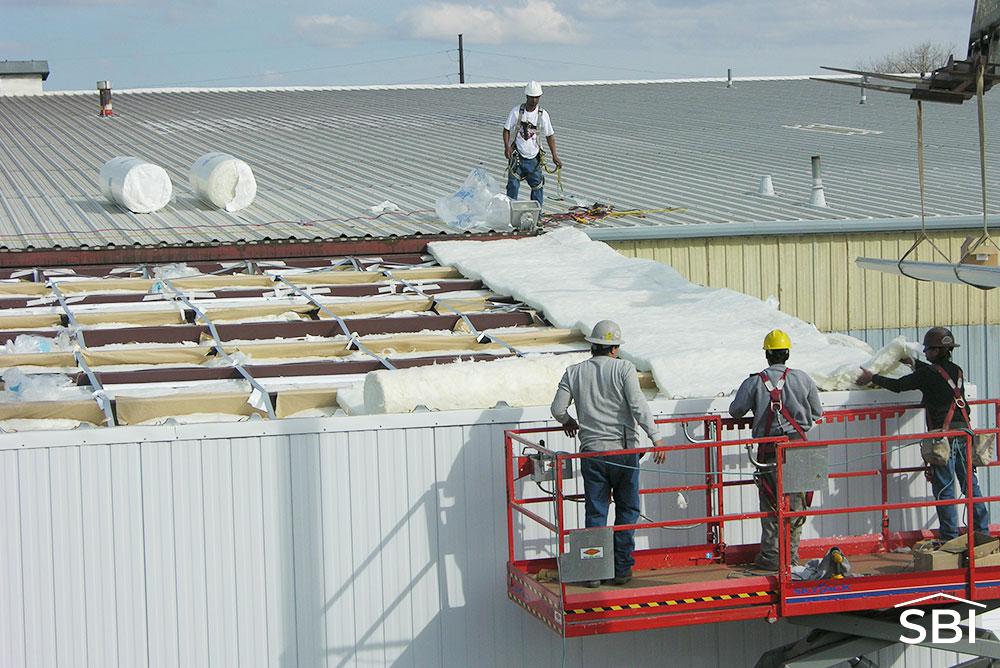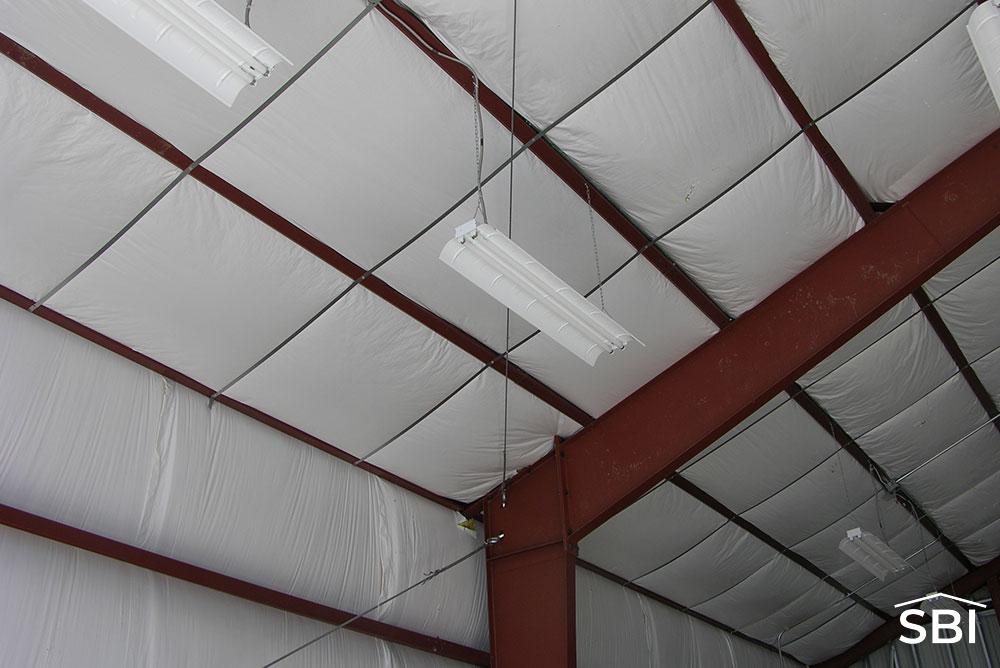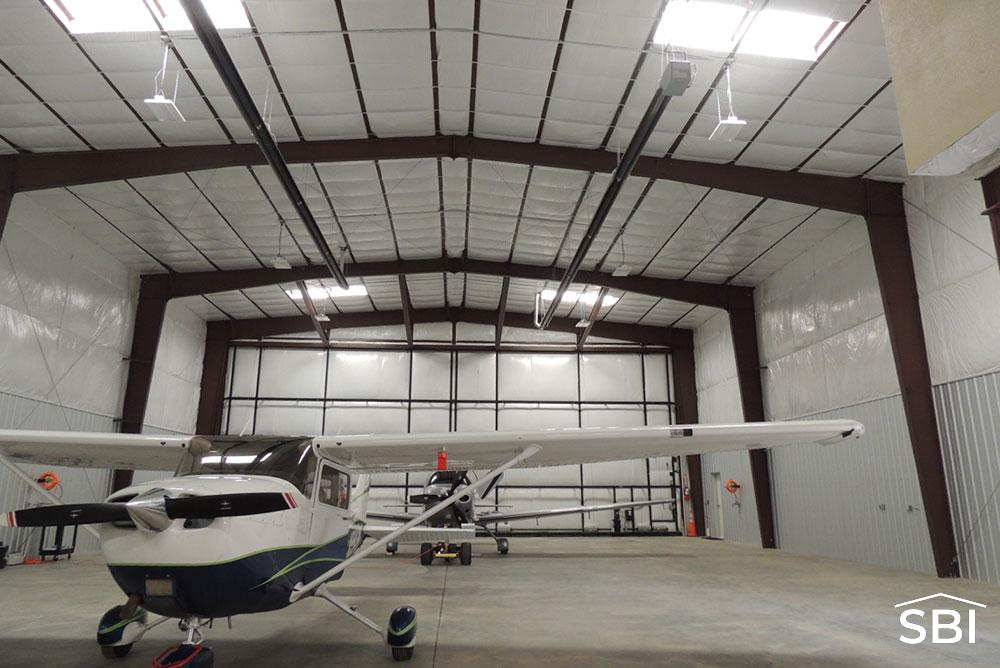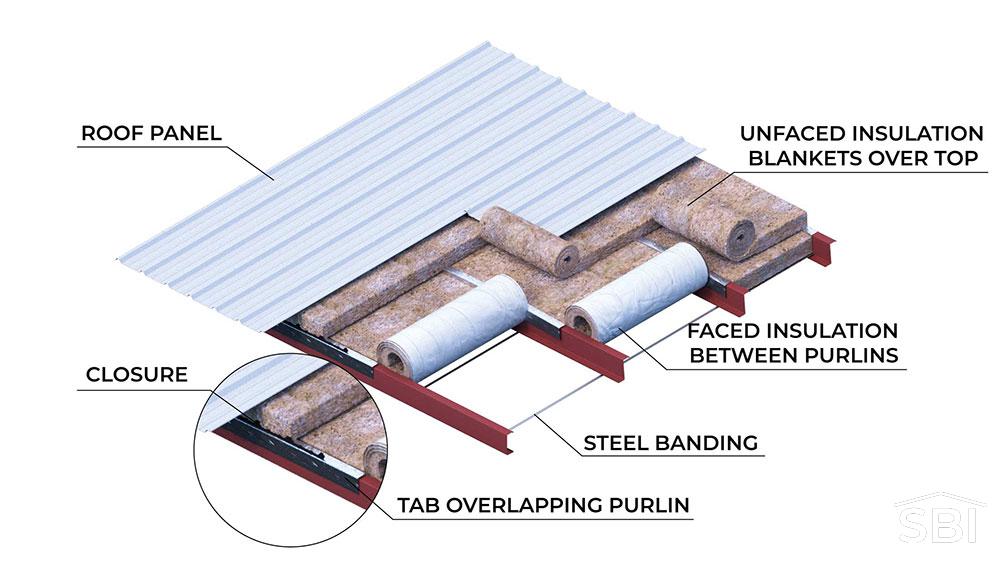
A high R-Value system is commonly referred to as a double layer system. Two layers of insulation are installed and held up with metal bands to achieve a High R-Value.
| SINGLE LAYER | R-VALUE | DOUBLE LAYER | HIGH R-VALUE |
| 2.5″ | R-8 | 3″+6″ | R-29 |
| 3″ | R-10 | 3.5″+6″ | R-30 |
| 3.5″ | R-11 | 4″+6″ | R-32 |
| 4″ | R-13 | 2.5+8″ | R-33 |
| 6″ | R-19 | 3″+8″ | R-35 |
| 8″ | R-25 | 6″+6″ | R-38 |
| 9.25″ | R-30 | 3″+9.25″ | R-40 |
| 4″+9.25″ | R-43 |
Used in new metal buildings when higher R-Values are desired. Up to R-43 can be achieved.
Installing Double Layer Insulation Systems
Steel bands are installed on the underside and perpendicular to the roof purlins. A pre-cut layer of insulation faced with polypropylene fabric is then installed in between the purlins, running the length of the building. This layer is exposed to the inside of your building and the polypropylene product serves as a vapor retarder while providing a bright, reflective interior finish. A second layer of unfaced fiberglass is then installed from the peak to the eave- perpendicular to the roof purlins and over the top of the first layer. This acts as a thermal spacer between the exterior panels and the steel roof purlins. The insulation blankets are pre-cut to fit into the roof and wall cavities of your building. This helps save time and money by eliminating any extra waisted material that would normally be cut off. Double layer systems are a great choice for buildings where people will work or live, or if energy savings are important to the owner. Investing in a high R-Value system up front will save you money for years to come throughout the life span of the building.

